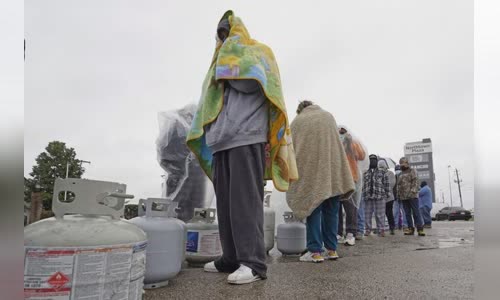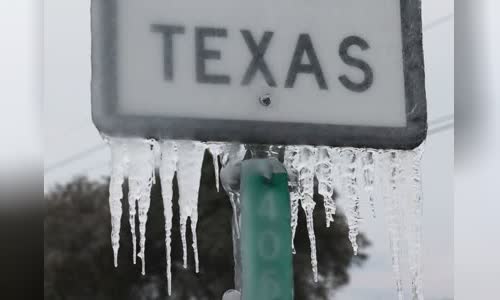The wide outage exposes the Texas grid's weakness: it is not able to withstand extreme weather events and extremes.
Power outages don't just happen in Texas.

People queue to buy LPG after cold weather caused power outages in Texas on February 17 Photo: AP
However, the blackout of more than three million Texans in the freezing cold, in a state that prides itself on energy production, underscores the severity of an ongoing problem in America with an increasing frequency.
The cold has caused Texans to increase heaters, many types of which consume a lot of electricity.
Texas is a state with a mild climate, hot in summer but not too cold in winter.
But the power planners for this winter winter had not envisioned a drop in temperatures that would freeze natural gas pipes and stop wind turbines from spinning.
"Every power supply is not working at full capacity," Daniel Cohan, associate professor of civil and environmental engineering at Rice University in Houston, tweeted.
The large gap between energy supply and demand in Texas also caused electricity prices to skyrocket from around $ 20 / MWh to $ 9,000 / MWh in the state's wholesale free electricity market.
That raises the question of whether some generators are deliberately profiting by shutting down operations to push electricity prices up instead of buying more gas to run the thermal power plant.
"We can't speculate about other people's motives that way," said Bill Magness, chief executive of ERCOT, and said the generators assured him they were doing their best to provide electricity.
Gas and wind turbines can take protection against extreme winter weather, but this is usually done in the colder northern states of the United States.
Dan Woodfin, an ERCOT official, said the plant upgrade after the 2011 incident helped limit power outages during a similar cold spell in 2018, but this week's icy weather was "harsher".
However, Ed Hirs, an energy specialist at the University of Houston, rejected ERCOT's claim that the situation this week was unpredictable.
In California, regulators last week ordered the state's three main electric utilities to increase supplies and possibly renovate plants to avoid supply shortages that occurred in California six months ago.

Ice on a highway sign in Killeen, Texas on February 18 Photo: AFP
"The big difference is that the California leaders realize that climate change is happening, but the Texas official does not seem like that," said Severin Borenstein, professor of business administration and public policy at the University of California, Berkeley
Rotating power outages are a reluctant measure when demand exceeds supply and threatens to shut down the entire system, grid operators say.
Theoretically, when there is a rotating power outage, no residential neighborhood should experience too long a blackout, but that wasn't true this week in Texas.
The rotating outage is activated when the power reserve drops below a certain level.
In Texas this week, grid operators and power companies caught up with severe weather forecasts at least a week in advance.
However, residents did not seem to pay attention to that call, few were informed in advance of when their homes went out of power.
To avoid alternate power outages, when electricity companies or network operators warn of overload, residents should turn off heaters and avoid using appliances that consume a lot of electricity.
However, Texas people can be willing to reduce the temperature of heaters if the management agencies impose a higher power price system during peak hours and lower at other times.
Experts also say that more costly structural changes need to be made.
Texas, which has a grid system that is virtually separate from other states to avoid federal regulation, may have to rethink a "go it alone" strategy.
"The system is not up to the standards we want to see," said Joshua Rhodes, an energy researcher at the University of Texas at Austin.



 Rebecca Carothers
Rebecca Carothers







